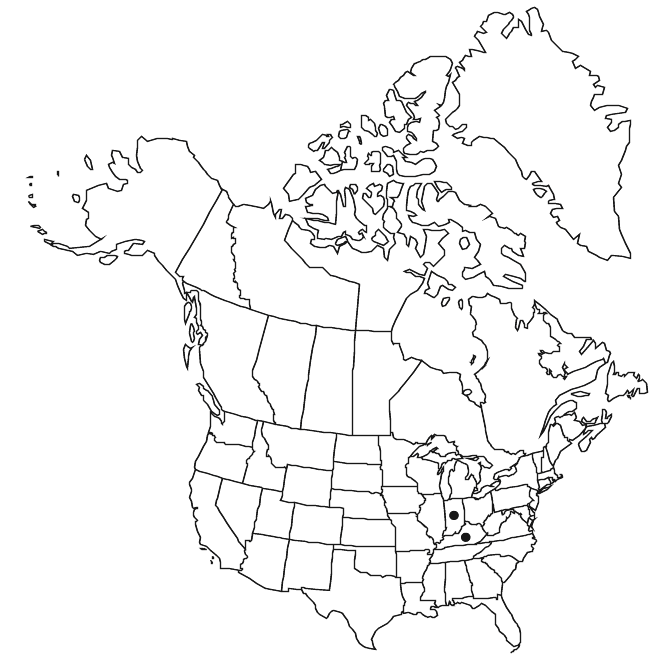Solidago shortii
Fl. N. Amer. 2: 222. 1842.
Plants 60–130 cm; rhizomes short, stout. Stems 1–10+, ascending to erect, scabroso-puberulent at least in distal 1/2. Leaves: basal withering by flowering; mid and distal cauline numerous; subsessile or obscurely petiolate; blades narrowly elliptic to lanceolate, 7–10 × 10–15 mm, firm, attenuate, margins distally serrate, eciliate, 3-nerved, apices acuminate or sharply acute, faces glabrous. Heads 50–150, in paniculiform arrays, branches recurved, secund. Peduncles 0.5–3 mm, sparsely strigose; bracteoles linear, minute. Involucres narrowly campanulate, 4–5 mm. Phyllaries in 3–4 series, lanceolate to linear-lanceolate, unequal, apices obtuse, innermost acute. Ray-florets 5–8; laminae 2–3 × 0.75 mm. Disc-florets 5–9; corollas 3–3.5 mm, lobes 0.5 mm. Cypselae ca. 2 mm, moderately short-strigose; pappi 2–3 mm. 2n = 36.
Phenology: Flowering Aug–Oct.
Habitat: Dry, open places
Elevation: 100–200 m
Discussion
Of conservation concern.
Solidago shortii is found in Fleming, Nicolas, and Robertson counties, Kentucky, and Harrison County, Indiana. It was found historically on rock islands in the falls of the Ohio River near Louisville. Solidago shortii is listed as endangered by the U.S. Fish and Wildlife Service and is in the Center for Plant Conservation’s National Collection of Endangered Plants.
Selected References
None.
